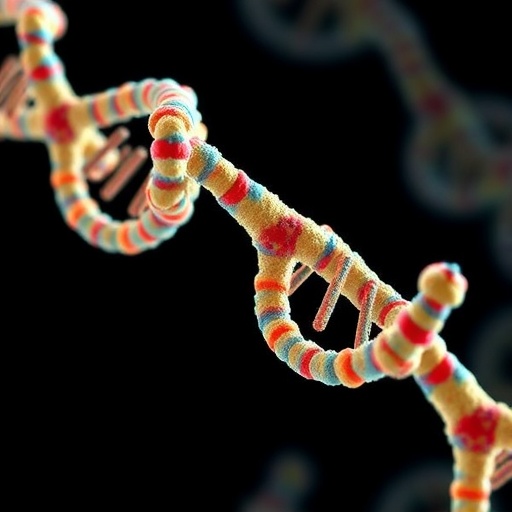A groundbreaking study has unveiled promising new therapeutic avenues for Hutchinson-Gilford Progeria Syndrome (HGPS), a devastating genetic disorder characterized by rapid aging in children. Researchers from the University of Bristol and IRCCS MultiMedica in Italy have identified a “longevity gene” variant, originally found in supercentenarians—people who live beyond 100 years—that can substantially mitigate cardiovascular deterioration in progeria models. This landmark discovery harnesses the natural biology of healthy aging, providing a novel angle in treating a condition that currently has limited and largely palliative options.
Progeria, a fatal genetic disease, is caused by a mutation in the LMNA gene leading to the production of progerin, a toxic protein that disrupts the structural integrity of the nuclear envelope in cells. This disruption accelerates cellular aging, particularly affecting cardiovascular tissues and rapidly inducing heart-related complications which are the primary cause of death in affected children, often by their mid-teens. Despite its rarity, the aggressive nature and lack of effective treatments for HGPS have driven urgent research efforts worldwide.
Until now, the FDA-approved treatment for progeria has been lonafarnib, a farnesyltransferase inhibitor designed to reduce the accumulation of progerin. Though this drug has extended life expectancy to some degree, it neither reverses the underlying generative damage nor significantly improves heart function. The Bristol and IRCCS MultiMedica team, led by Dr. Yan Qiu, Professor Paolo Madeddu, and Professor Annibale Puca, sought to pivot from this paradigm by exploring protective genetic factors that help sustain cardiovascular health in extreme old age.
Central to their approach is the LAV-BPIFB4 gene, a variant enriched in long-living individuals, which previous studies have demonstrated enhances vascular function and resilience to age-related endothelial decline. The researchers hypothesized that this gene could counteract the deleterious effects of progerin without targeting the toxic protein directly, instead reinforcing the tissues’ capacity to manage cellular stress and maintain homeostasis.
Using a well-established mouse model genetically engineered to express the progerin mutation, the team administered a single injection of the LAV-BPIFB4 gene. The results were remarkable: treated mice exhibited significant improvement in diastolic function, a measure of the heart’s ability to relax and fill properly. Moreover, histological analyses revealed reduced fibrosis in cardiac tissues, indicating less damage and scarring. Enhanced angiogenesis was observed as well, with an increase in the formation of small blood vessels crucial for nutrient delivery and tissue repair.
Extending their findings to human biology, the researchers tested the longevity gene’s effects on cellular samples from progeria patients. They found that cells expressing LAV-BPIFB4 showed markedly diminished aging markers and decreased fibrotic activity. Intriguingly, this protective influence occurred without altering progerin levels directly, suggesting the gene enhances cellular defense mechanisms rather than eliminating the toxic protein.
This strategy marks a significant departure from previous therapies which focused solely on reducing progerin accumulation. By shifting the focus towards enhancing the body’s intrinsic ability to tolerate and combat progerin-induced stress, the work opens new therapeutic possibilities not only for Progeria but potentially for broader cardiovascular aging and age-related diseases. It reflects an emerging paradigm in gerontology and regenerative medicine that emphasizes the modulation of longevity pathways.
Professor Annibale Puca highlighted the translational potential of the work, envisioning future clinical applications involving gene therapy or advanced delivery systems such as protein- or RNA-based platforms. This flexibility could allow personalized and more effective interventions aimed at improving the quality of life and survival of children afflicted by this relentless disease.
Beyond the immediate clinical implications for HGPS, the discovery adds compelling evidence to the role of longevity genes in cardiovascular health. It suggests that the genetic secrets held by supercentenarians could inform treatments that promote healthy aging in the general population, mitigating cardiac decline inherent in the natural aging process. This convergence of rare disease research and aging science exemplifies the potential for cross-disciplinary breakthroughs.
The study, published in the prestigious journal Signal Transduction and Targeted Therapy, represents the first demonstration that a longevity-associated gene can prevent diastolic dysfunction in a progeria animal model. It sets a new benchmark for the development of therapies that harness natural protective mechanisms against age-related cardiovascular deterioration and genetic disorders marked by premature aging.
Researchers continue to investigate how LAV-BPIFB4 modulates immune responses and cardiovascular integrity under pathological stress. The ongoing studies aim to delineate the molecular pathways involved and optimize gene delivery methodologies to maximize therapeutic efficacy and safety. Given the complexity of progeria and the delicate nature of pediatric interventions, such comprehensive preclinical evaluation is essential before moving to human trials.
In sum, this innovative research breathes new life into the fight against progeria, offering hope to patients and families affected by the disease. It also underscores the broader potential of longevity genes to revolutionize how medicine approaches aging and cardiovascular disease, providing a beacon for future research and therapeutic innovation.
Subject of Research: Animals
Article Title: LETTER OPEN A longevity-associated variant of the human BPIFB4 gene prevents diastolic dysfunction in progeria mice
News Publication Date: 16-Oct-2025
Web References:
Signal Transduction and Targeted Therapy Journal
DOI: 10.1038/s41392-025-02416-3
Keywords: Progeria, Genetic disorders, Health and medicine, Children




